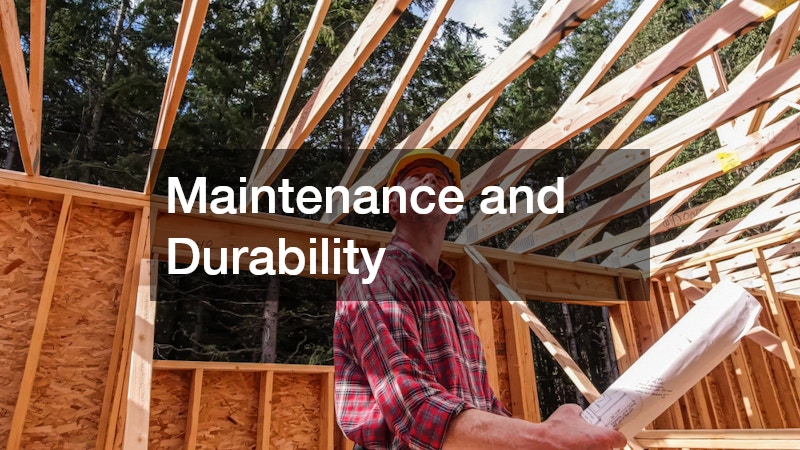Choosing the Right Material for Your Commercial Roof
Choosing the right material for your commercial roof is a crucial decision that impacts the longevity, cost, and efficiency of your building. In this article, we will explore the various factors and considerations involved in selecting the best roofing material for your commercial property. Making an informed decision can ensure that your roof not only protects your investment but also enhances the building’s overall performance.
The Most Common Commercial Roofing Materials
Single-Ply Membranes
Single-ply membranes, such as TPO, PVC, and EPDM, are popular choices for commercial roofing due to their versatility and durability. TPO (thermoplastic polyolefin) provides excellent energy efficiency benefits, reflecting sunlight to reduce cooling costs.
PVC (polyvinyl chloride) offers superior durability and chemical resistance, making it ideal for restaurants or facilities exposed to harsh environments.
EPDM (ethylene propylene diene monomer) is known for its exceptional resilience in varying temperatures and weather conditions. This material is particularly effective in cooler climates where it can withstand frost and snow without cracking. Additionally, its simple installation process makes EPDM a cost-effective choice for many commercial buildings.
Each type of single-ply membrane presents unique advantages, and the choice often depends on the specific needs of the business. In areas with extreme temperature swings, EPDM’s resistance to thermal shock can be invaluable. These materials are also relatively low-maintenance, which can contribute to long-term savings.
Metal Roofing
Metal roofing options such as aluminum, steel, and copper are prized for their longevity and aesthetic appeal. Aluminum, being lightweight and corrosion-resistant, is often used in coastal areas where salt spray can be a concern. Steel, especially galvanized or coated variants, offers robustness and cost efficiency, making it a common choice for commercial structures.
Copper roofing stands out due to its durability and distinct appearance, often used in architectural applications to add a touch of elegance. Although initially more expensive, copper requires little maintenance and can last for over a century, justifying the upfront cost. The ability to recycle metal roofing materials also adds a sustainability aspect to its appeal.
Despite the higher initial costs, metal roofing provides an excellent return on investment through reduced maintenance expenses and unparalleled durability. Its reflective properties help enhance energy efficiency by minimizing heat absorption. This characteristic not only contributes to lower energy bills but also makes metal roofing an environmentally friendly selection.
How Environmental Factors Affect Material Selection
Climate Considerations
The local climate plays a significant role in determining the most suitable roofing material for a commercial property. In regions prone to high winds, opting for materials known for their wind resistance, like metal or specific single-ply membranes, is crucial. For areas with heavy rainfall, a roofing material with superior water resistance can prevent leaks and structural damage.
Sunlight exposure and UV radiation can degrade many roofing materials over time, impacting their longevity and performance. Materials like TPO and PVC offer excellent UV resistance, making them suitable for buildings in sunny climates. Conversely, UV exposure can be more easily mitigated with metal roofing, which reflects a significant portion of sunlight.
Energy Efficiency
The energy efficiency of a commercial roofing material can significantly influence the building’s overall operational costs. Certain materials, like reflective roofing, can dramatically reduce cooling requirements by reflecting solar heat. The choice of a roofing material can thus play a pivotal role in reducing the carbon footprint of a commercial building.
Energy-efficient roofing materials often come with a higher initial cost, but they offer substantial long-term savings through reduced energy bills. TPO roofing, for instance, is renowned for its energy efficiency, helping businesses maintain a stable indoor climate throughout the year. Investing in energy-efficient roofing can also enhance a property’s market value.
How Budget Impacts Roof Material Choice
Initial Costs vs. Long-Term Investment
When selecting a roofing material, balancing initial costs with long-term benefits is essential for an optimal investment. While some materials might require significant upfront investment, their durability and low maintenance needs can lead to significant cost savings over time. For instance, metal and certain high-quality single-ply membranes may appear costly initially but often repay their cost through longevity and minimal upkeep.
It’s essential to conduct a thorough cost-benefit analysis when evaluating roofing options, considering both immediate expenses and potential future savings. This approach ensures the roofing material supports the overall economic strategy of the business. Taking into account the full lifecycle cost allows for more strategic budget allocations.
Maintenance and Durability
Maintenance requirements heavily influence the overall cost and performance of commercial roofing materials. Some materials, like certain single-ply membranes, offer low maintenance needs, which can be financially advantageous over time. Regular maintenance, although an added cost, can significantly extend the life of the roofing material.
The durability of the roofing material directly affects how often maintenance or repairs may be required. Materials like metal and EPDM are renowned for their long lifespan, often requiring less frequent repairs over their lifespan. High durability materials can mitigate replacement costs and minimize disruptions to building operations.
Selecting the right roof material for your commercial property requires careful consideration of various factors. Understanding these factors can guide you towards making a well-informed decision that balances performance, cost, and sustainability for your specific needs. By taking into account material type, environmental conditions, energy efficiency, and budgetary constraints, you can ensure your roofing choice supports the long-term success of your commercial endeavor.

